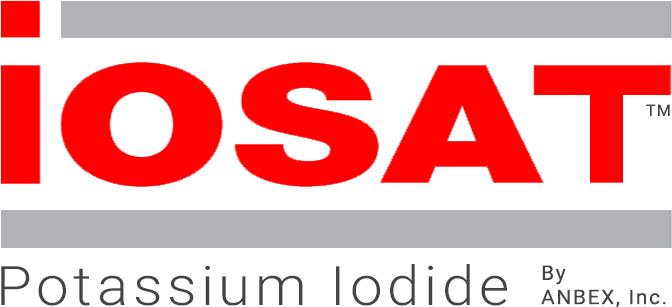References
1/ More than 90% of the cancer at Chernobyl was thyroid related [10 years after the accident]
“except for thyroid cancer, there has been no confirmed increase in the rates of other cancers, including leukemia”
FROM: “Assessment of the Use of Potassium Iodide (KI) as a Public Protective Action During Severe Reactor Accidents” US Nuclear Regulatory Commission, Released as Draft NUREG-1633, page 15
2/ Thyroid damage was seen more than 200 miles downwind [At Chernobyl]
“The increase [in thyroid cancer] has been documented up to 500 km from the accident site.”
FROM: “Guidelines for Iodine Prophylaxis following Nuclear Accidents”, World Health Organization, Page 5
3/ Thousands of cases are known
“About 6000 thyroid cancer cases have been detected “ U.S. Nuclear Regulatory Commission, Office of Public Affairs, “BACKGROUNDER”, April, 2012
4/ more than 18 million people received the drug
SEE: “Iodine Prophylaxis in Poland After the Chernobyl Reactor Accident: Benefits and Risks”. The American Journal of Medicine, May 1993, Volume 94, page 524
5/ “Almost all of the thyroid cancer from Chernobyl took place more than 30 miles from the reactor”
“The vast majority of the thyroid cancers were diagnosed among those living more than 50 km (31 miles) from the site”
FROM: “Assessment of the Use of Potassium Iodide (KI) as a Public Protective Action During Severe Reactor Accidents” US Nuclear Regulatory Commission, Released as Draft NUREG-1633, page 16
6/ “KI can provide safe and effective protection against thyroid cancer caused by irradiation”
US Food and Drug Administration. “Talk Paper”, December 10, 2001
7/ “A protective measure that can be used even if all other safeguards fail”
US Nuclear Regulatory Commission, Annual Report, 1980
8/ “Potassium iodide pills should be available to everyone age 40 or younger living near a nuclear power plant”
“Distribution and Administration of Potassium Iodide in the event of a Nuclear Incident”. National Research Council of the US National Academy of Sciences., 2004
9/ “[Cancer] can be reduced or even prevented by stable iodine prophylaxis…Significant radiation doses can occur hundreds of kilometers from the site, beyond emergency planning zones…the risk is real”
“Guidelines for Iodine Prophylaxis following Nuclear Accidents”, World Health Organization
10/ “Except for thyroid cancer, there has been no confirmed increase in the rates of other cancers [due to Chernobyl]”
Assessment of the Use of Potassium Iodide (KI) as a Public Protective Action During Severe Reactor Accidents” US Nuclear Regulatory Commission, Released as Draft NUREG-1633, page 15
11/ “100% effective in preventing radiation-induced effects, including thyroid cancer”
American Academy of Pediatrics, NEWS Release, “In Radiation Disaster, Children are Especially Vulnerable”, May 10, 2003
12/ “KI was credited with permissible radioactive iodine content in 97% of those tested…[and] no serious side effect of KI use have been reported”
“Report on the Accident at the Chernobyl Nuclear Power Station” US Nuclear Regulatory Commission, Released as NUREG-1250, pages 7-8, 9
13/ in a serious powerplant accident, “much of the radioactive plume will be deposited on the ground within about 50 miles” of the release
“Criteria for Preparation and Evaluation of Radiological Emergency Response Plans and Preparedness in Support of Nuclear Power Plants.” US Nuclear Regulatory Commission, Released as NUREG-0654/FEMA-REP-1, Rev. 2, page 6
14/ at Chernobyl, the NRC reported “the vast majority of the thyroid cancers were diagnosed among those living more than 50 km (31 miles) from the accident site”
“Assessment of the Use of Potassium Iodide (KI) as a Public Protective Action During Severe Reactor Accidents” US Nuclear Regulatory Commission, Released as Draft NUREG-1633, page 16
15/ “Among Japanese children who were exposed to radiation from the bombings (and who are still alive) nearly half (44.8%) suffer thyroid disease”
SEE: “Thyroid Disease 60 Years after Hiroshima and 20 Years After Chernobyl”, Journal of the American Medical Association, March, 2006, Vol 295, page 1060
16/ “a US government study found”
SEE: “Radiation Effects in the Marshall Islands” U.S. National Institutes of Health, Bethesda, MD, Brookhaven National Laboratory, Upton, NY
17/ SEE: “Exposure of the American People to Iodine-131 from Nevada Nuclear Bomb Tests” National Cancer Institute, Board on Radiation Effects Research Commission, National Research Council, National Academy Press
18/ The NRC explains this by assuring us that “Life-threatening radiation doses would generally not occur” beyond ten miles. But this ten-mile limitation is meaningless
“Criteria for Preparation and Evaluation of Radiological Emergency Response Plans and Preparedness in Support of Nuclear Power Plants.” US Nuclear Regulatory Commission, Released as NUREG-0654/FEMA-REP-1, Rev. 2, page 6
19/ cancer is caused by doses as low as 5 REM,
SEE: “NRC NEWS”, US Nuclear Regulatory Commission, March 16, 2011
20/ Both predict radiation dose levels to the thyroid that could reach 100 times “safe” levels among exposed individuals at 50 miles from the release. And both predict that dangerous levels could be seen for 200 miles downwind
SEE: U.S. Nuclear Regulatory Commission, “Examination of the Use of Potassium Iodide (KI) as an Emergency Protective Measure for Nuclear Reactor Accidents”, NUREG/CR1433, tables 3-4
SEE: U.S. Nuclear Regulatory Commission, “An Analysis of Potassium Iodide (KI) Prophylaxis for the General Public in the Event of a Nuclear Accident”, NUREG/CR-6310 table 4-8
